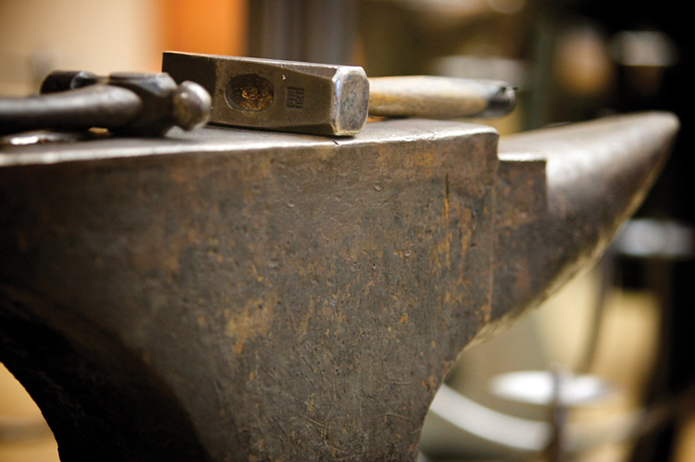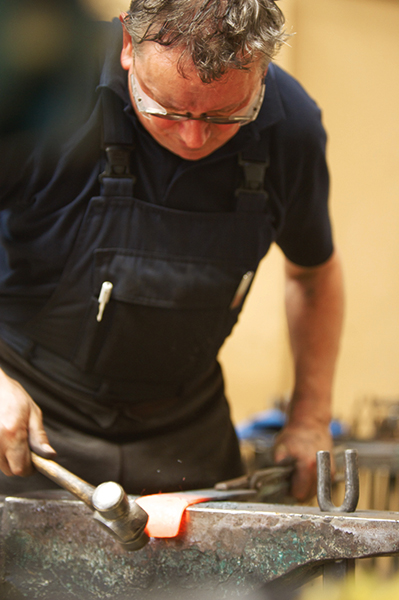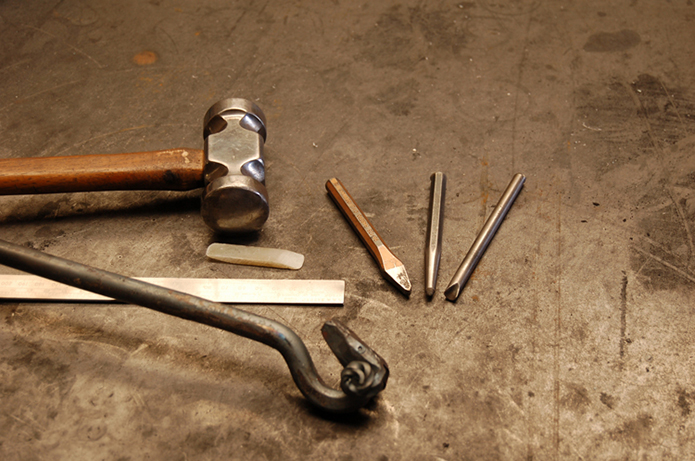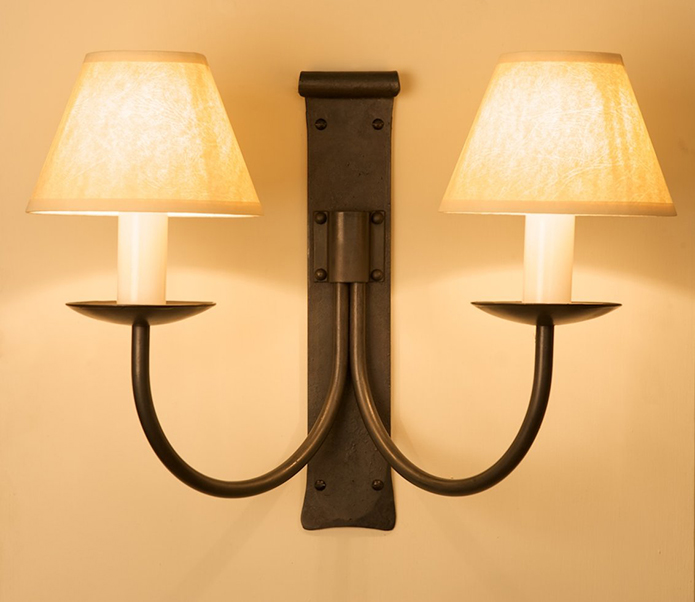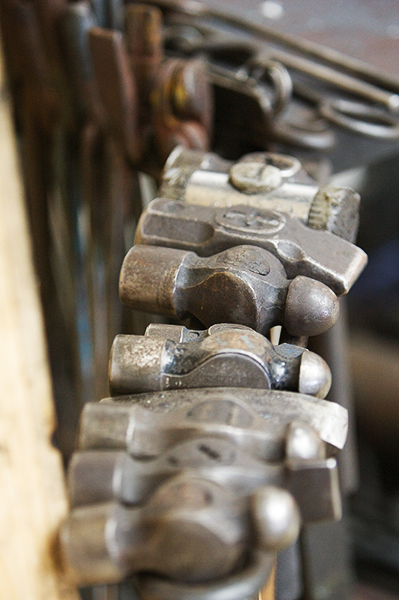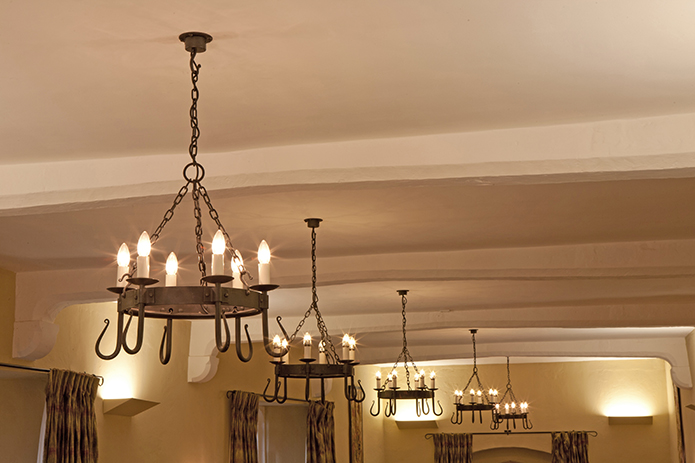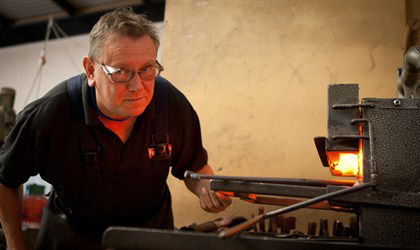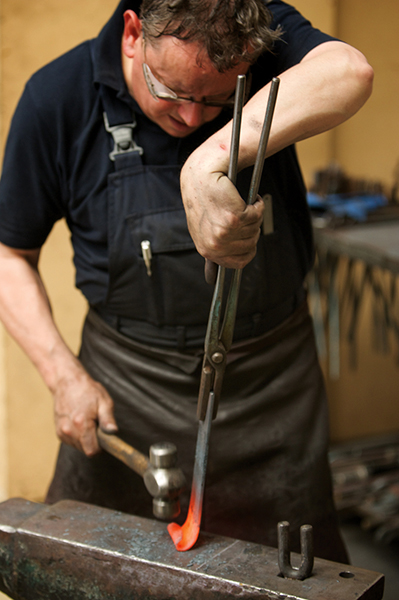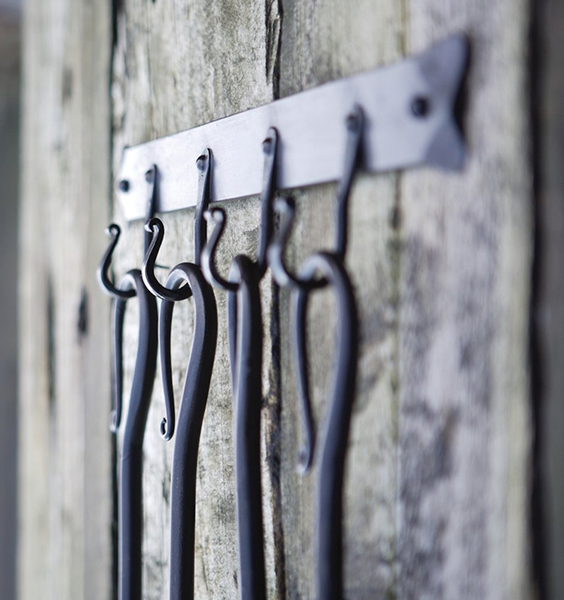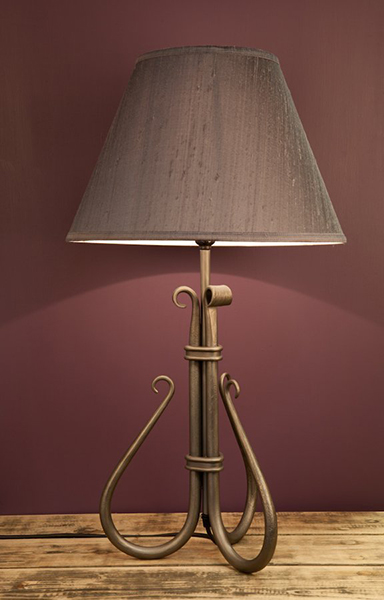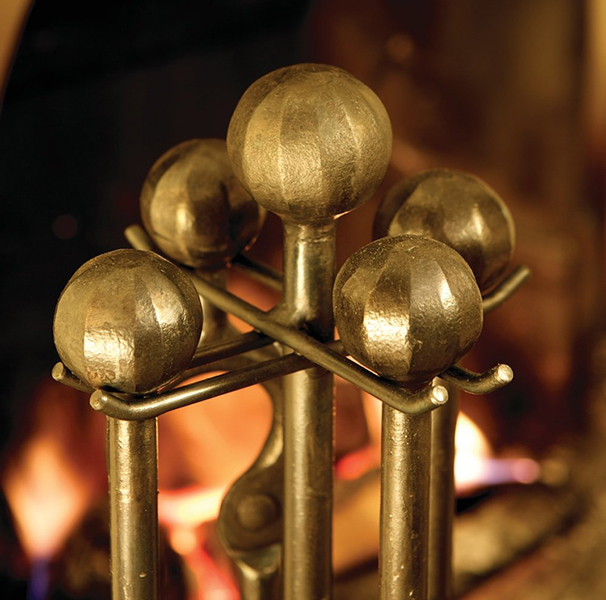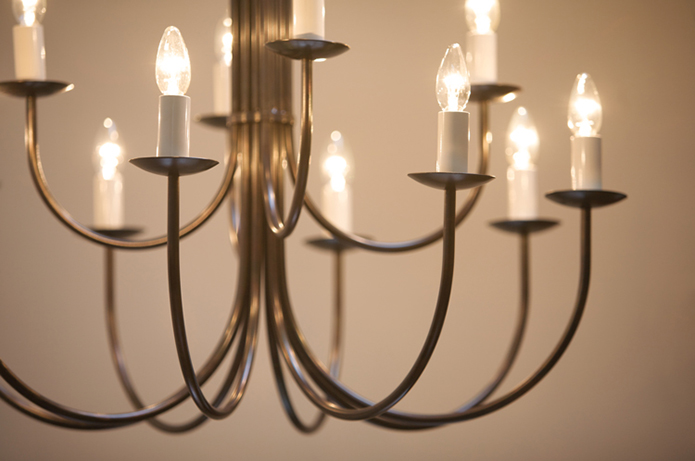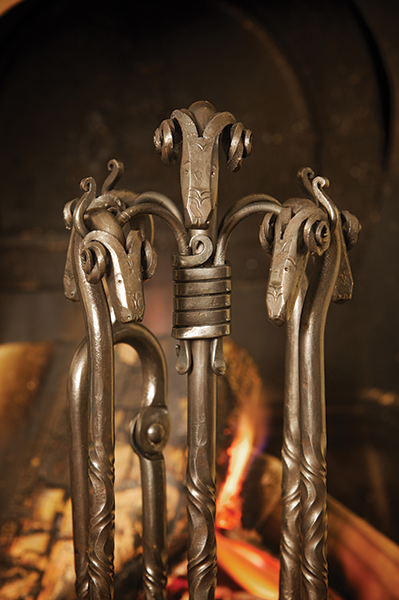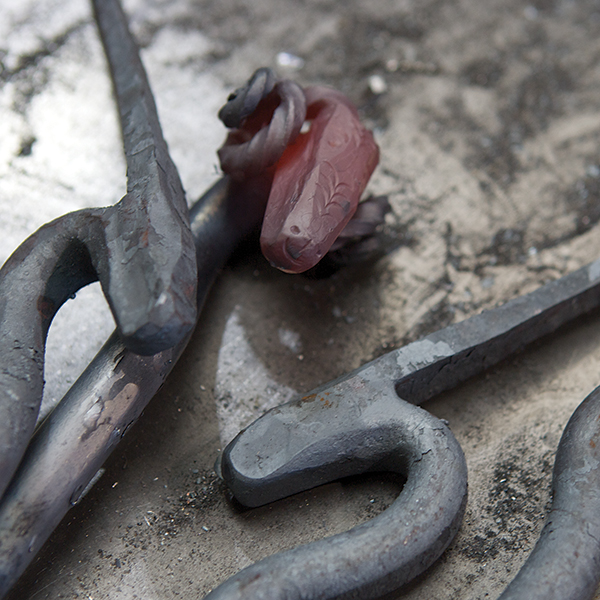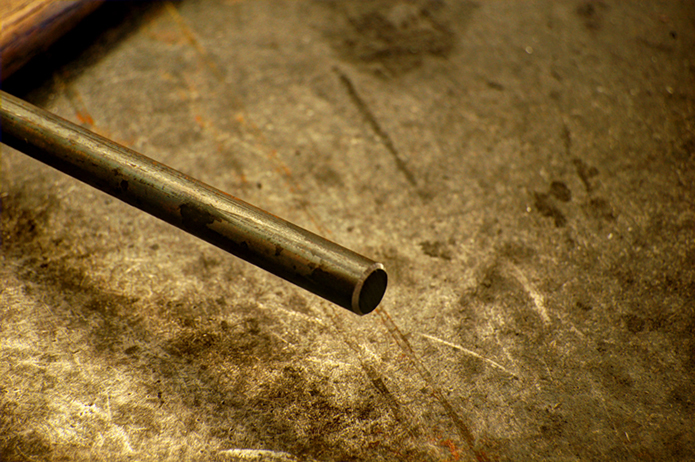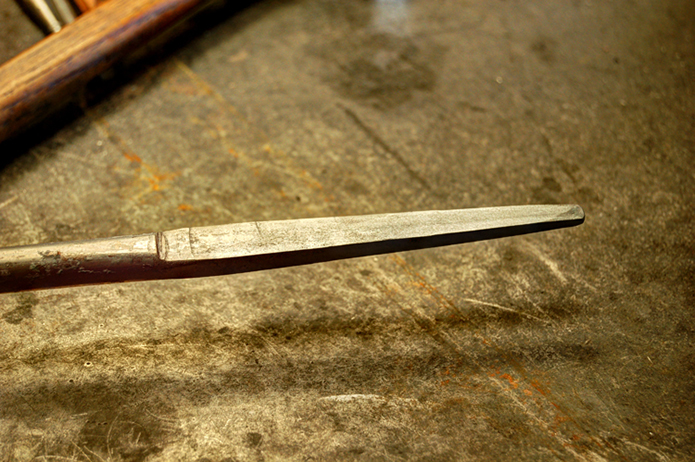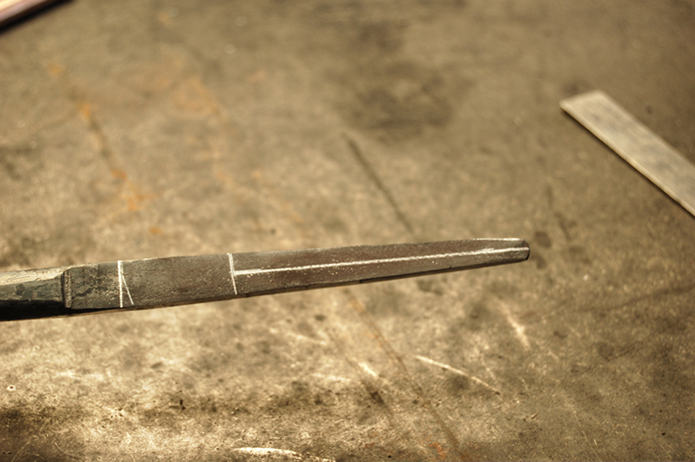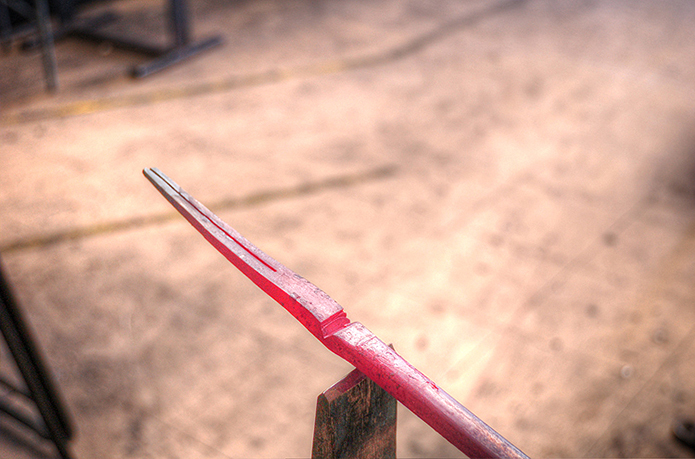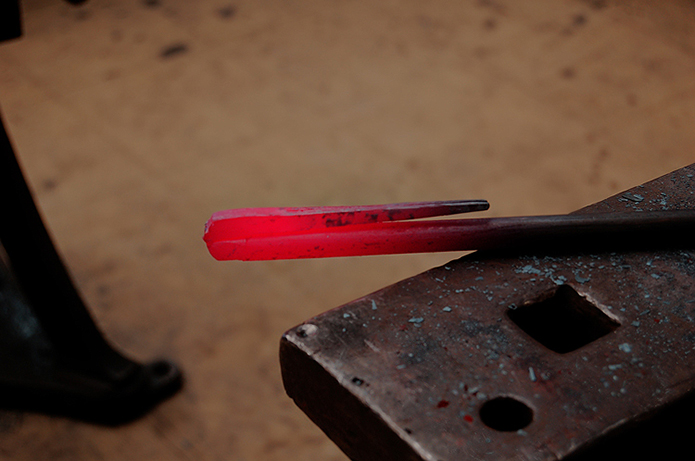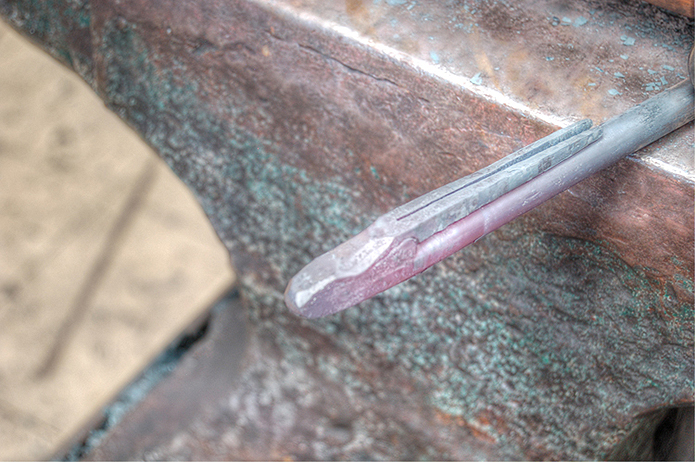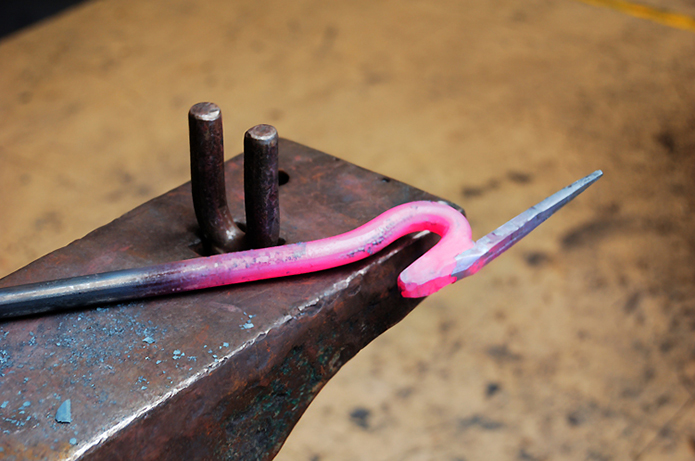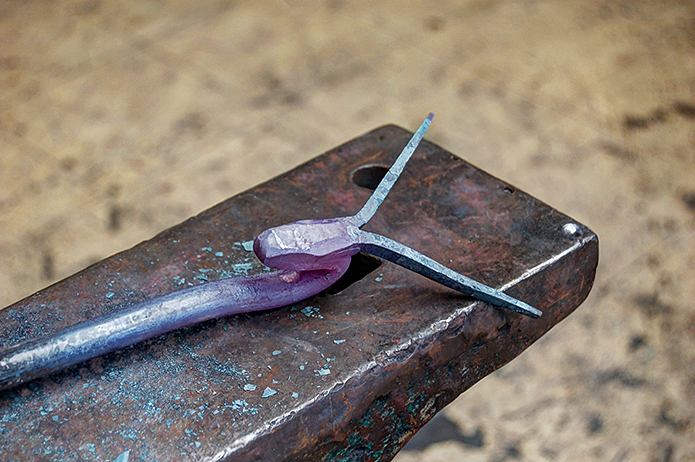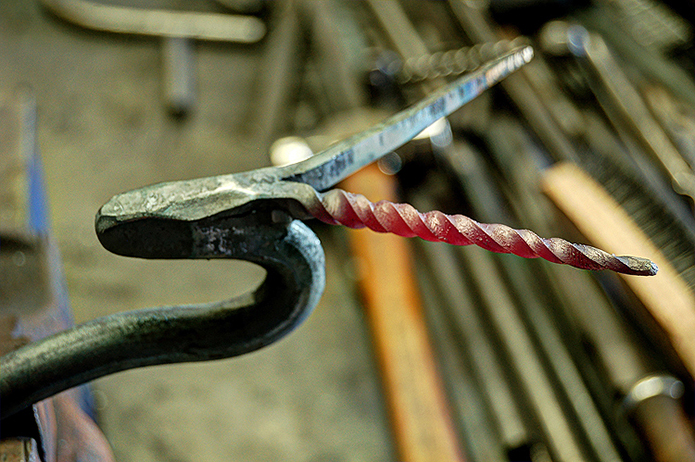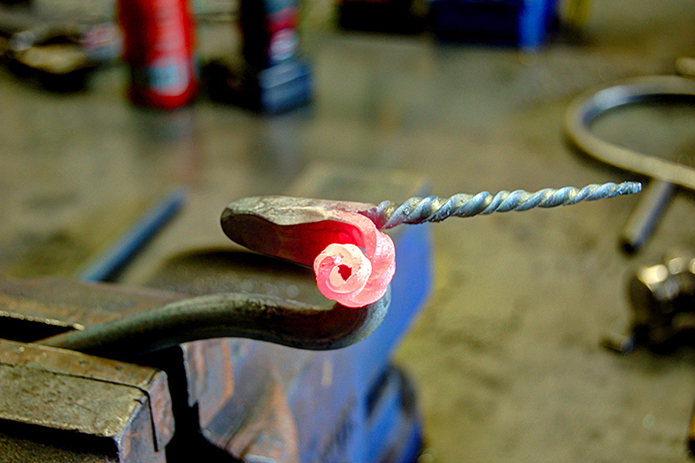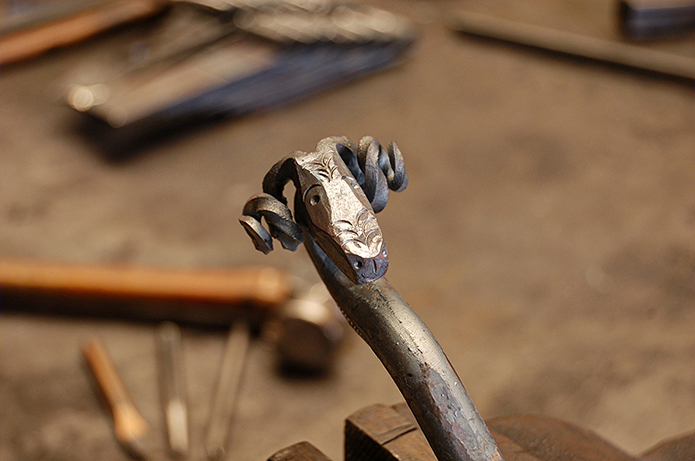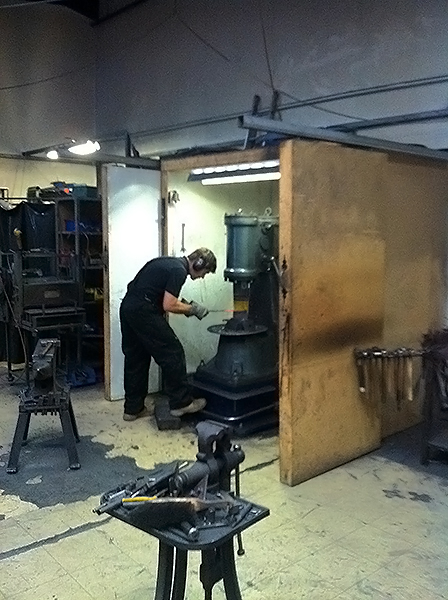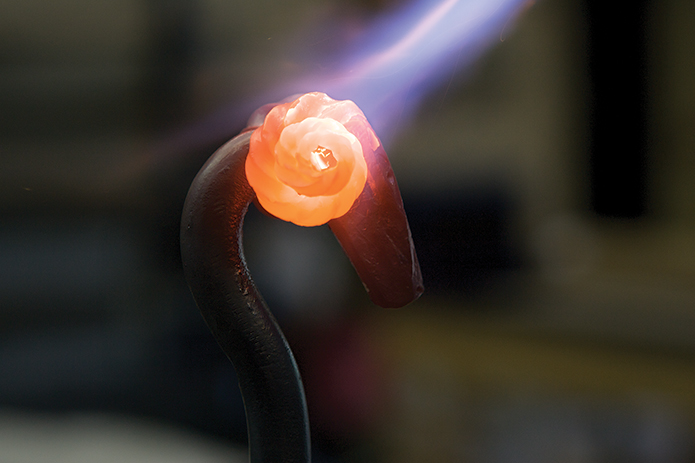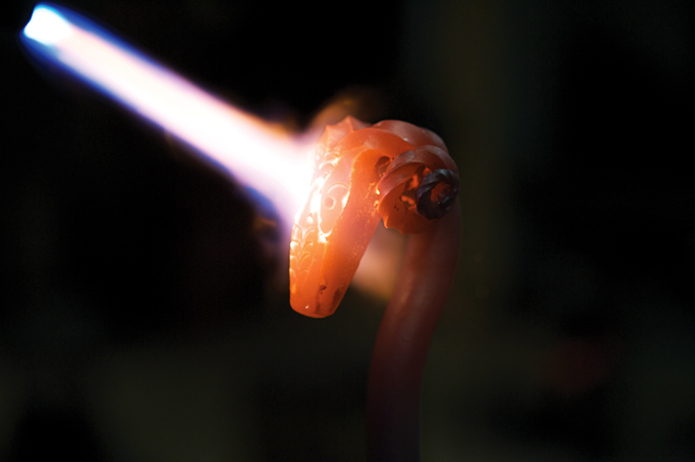
The strength and necessity of the blacksmith and his craft; working red-hot metal with hammer and anvil to create weapons and tools (domestic, agricultural and industrial), dates back to prehistoric times. Yet, blacksmithing has always been a mixture of functional and aesthetic. Subtle flourishes of decoration have traditionally been added as a demonstration of the blacksmith’s skill and signature and often represented a replication of folklore and tradition. Blacksmithing can be said to be an ‘extreme’ craft; as it requires brute force to hand-work and intense practicality to engineer metal combined with an artistic eye for design and detail, as well as a soulful appreciation of form.
A perfect example of a modern day ‘iron-age’ man, combining both functionality and decoration; aesthetic engineering and savvy soulfulness, is Nigel Tyas. Evolving from a blacksmith within heavy industrial engineering to specialising in hand-forging interiors objects for the home, Nigel is, in his own words, an ‘artistic engineer’, and his work is the embodiment of both form and function, which keeps such an ancient craft relevant in these most modern of times. A practical object, such as a fire-poker, light-fitting or curtain pole, can be recreated in all its practical usefulness and historical authenticity as well as striking beauty via the strength in expertise, yet the softness of artistry Nigel Tyas possesses. We hope, through this interview with Nigel, you gain an insight into the world of the blacksmith and someone who is passionate about keeping metalworking skills alive in the UK.
ABOUT NIGEL TYAS
Nigel Tyas was born in South Elmsall and has spent his entire career working in the Sheffield area, first with the National Coal Board, before eventually setting up Nigel Tyas Ironwork in 2000 in a mill complex within a moorland village on the edge of the Peak District. Nigel specialises in traditionally made wrought iron and hand-forged iron products for the interior. He is quite unusual in that a lot of companies producing similar products have decided to ship production to China and India, but Nigel is firmly committed to producing his work in Sheffield, once the steel centre of the world.
Firstly, for those readers who aren’t familiar with Nigel Tyas Ironwork, can you explain what you do?
I was trained as an engineering blacksmith, making heavy forgings for the coal industry. As time has gone by I have turned these skills more towards the artistic side of the craft so I suppose I am an artistic engineer!
We specialise in interior lighting, curtain poles and fire irons, although we can turn our hands to other things. Our chandeliers range from 600mm diameter up to 2m and can be arranged as single tier or doubled up to make two or even three tier chandeliers for large halls in houses and sometimes castles. All our lights are individually made in our workshop by our small team of blacksmiths.
How has the role of a blacksmith changed over the years, and what type of work does a blacksmith typically get involved in today?
Traditionally blacksmiths would have made many agricultural and household implements along with weapons. In fact the blacksmith was known as ‘the King of trades’. Without his metalworking skills many other craftsmen could not work as they relied on the blacksmith for many of their tools, such as chisels, saws, knives and shears. Blacksmiths were involved across the whole spectrum of life from weapons to domestic implements and tools.
Through the twentieth century and particularly from 1950 onwards the role of the blacksmith has gradually diminished and in the 1970’s there were only a handful of traditional forges operating in the UK. Heavy forging as an industrial process has continued though, particularly in Sheffield where massive forgings weighing up to 200 tons are still worked on a regular basis. We still occasionally repair agricultural tools and equipment for local farmers.
Today the new generation of blacksmiths concentrate their skills more on the artistic side of the craft since demand for most of the traditional tools etc. has disappeared, and the contemporary smiths are producing metalwork of amazing quality and ingenious designs.
What do you feel are the key skills needed to become a blacksmith?
Throughout my training and in fact all my working life I have studied the properties of metal and how they change with the use of heat and how to combine different methods of shaping and forming to get the results I need. The ability to judge the condition and size of a piece is a skill which develops along with the ability to use a number of different hammers to create the shapes and forms as efficiently as possible. You need a good eye and an understanding of geometry to combine symmetry and balance in what you are making.
I understand you started your training with the National Coal Board back in the 1970s. Can you describe your career and what led you to set up Nigel Tyas Ironworks?
I started my first forging project at school when I was 14 and I still remember the excitement of drawing the red hot metal from the fire and shaping it to make my first poker. This was the moment I knew I wanted to become a blacksmith. In 1970 I started my apprenticeship with the National Coal Board at Elsecar Central Workshops where I was taught my craft for 5 years as well as forge work. Other skills also had to be gained such as welding and steel fabrication. I continued doing this kind of work for 16 years. I then decided to move into a different area of engineering and took qualifications in hydraulics and mechanical engineering and worked at various places making machinery for industrial use.
I was made redundant in 2000 and decided to go back to basics with the help of my wife Elizabeth, an IT software developer – we set up Nigel Tyas Ironwork and here I am all these years later doing the things I discovered when I was 14 and loving it!
What do you enjoy most about being a blacksmith?
To start with a piece of standard round or square bar and have a design and shape in your head which evolves through the combination of hand and eye is fantastic although even now there are times when things go wrong!
A lot of blacksmiths have taken the decision to outsource their production to India and China. How many companies producing similar work to yourself are still hand-forging here in the UK, and why haven’t you taken the decision to outsource production?
We are constantly bombarded by companies in China and India who would like us to outsource production. We could probably make more money that way but we always wanted to make the products ourselves in order to keep control of the quality and also to retain the skills here in the UK.
Over the last 14 years we have seen that demand for handmade products has grown and the heritage of metalworking in the Sheffield area is an added bonus for us.
You only set up Nigel Tyas Ironworks in 2000, but year-on-year sales growth has been very impressive since then, and you now employ 10 people. I imagine there have been challenges along the way; what advice could you give to anyone thinking of taking a similar path?
I have been lucky, my wife Elizabeth has the IT skills and design flair which enabled us to successfully market the business. A combination of good marketing, both online with our website and through magazine advertising, has raised our profile and enabled us to grow our business. We had little prior experience of marketing but knew what attracted us to products, so, with that in mind and with some help from friends in the marketing business we have built our framework. Customer service is key, along with good research into our target market and the products potential customers want.
You make very distinctive iron pokers with the horned head of a Whitefaced Woodland ram at the head; I imagine this is a world away from your work with the National Coal Board. Where do you find your inspiration for such beautiful pieces of work and who have been your creative influences?
I was renovating our house in 1998/9 and looking for interior ironwork; there was nothing here in the North, so I made my own. Then we had friends to visit when all the work was done and from their enthusiasm and encouragement I began to produce more and more work and eventually set up a permanent forge.
Blacksmiths have traditionally added decoration to their pieces of work. This was a sign of their skill and also a signature. Historically saltire marks in the form of a cross were put onto door furniture to ward off evil spirits and witches. My inspiration comes from various sources; the design for our Hartcliff chandeliers comes from the cloisters and vaulted archways of Fountains Abbey; the Illions lights have a decoration where I have tried to reproduce the ripples in the sand on Whitby beach.
The local breed of sheep is Whitefaced Woodland. There is a small flock near us with magnificent horns which I have tried to reproduce on our rams head fire irons.
Being from Sheffield, the centre of iron and steelmaking in Britain for so many years, how has this influenced your work and how important is the ‘Made in Sheffield’ quality label to you?
Sheffield has been the centre of iron and steel making in the UK for centuries and there are still a number of big forges operating including Sheffield Forgemasters and Firth Rixson who forge high quality components for the nuclear and aerospace industry. Sheffield still makes high volumes of top quality steels and alloys and it is this quality and heritage which is still respected worldwide. We have been awarded the ‘Made in Sheffield’ mark which I am proud to say is testament to the quality of our products and service.
What advice can you give to anyone aspiring to start a career as a blacksmith; how is it possible to get an apprenticeship given the small number of firms operating today?
For young people thinking of starting a career as a Blacksmith or Farrier it can be difficult to get an apprenticeship. There are a number of blacksmiths throughout the country who offer training mostly on weekend courses and a handful of colleges offering City & Guilds accredited qualifications. For more information look on the British Artist Blacksmith Association website.
Can you briefly explain to readers, who know nothing about blacksmithing, how you approach hand-forging a piece of work, such as one of your horned rams head pokers as an example?
If you were to think about making a rams head I suppose it’s a bit like origami with metal. First you need to evaluate the shape of the finished item and then work out how to flatten, split, fold and twist a single piece of stock bar into shape.
You start with round bar…
…and form a flat taper at one end.
Then the taper has to be split to form the horns.
The taper is then split across its width…
…and folded over to form the head.
The fold has to be forge welded together at around 1200°c.
Once this has been done the shape of the face can be formed and bent into shape…
…and the horns split.
The horns can now be twisted…
…and curled.
Finally the detail of eyes etc. is added.
Are the blacksmith’s skills fundamentally the same as they were thousands of years ago, or has technology played a much greater role, and have any of the basic skills been lost?
The skills we have are much the same as those used by our forebears. The quality of the metal we use has improved greatly but the methods of shaping and forming are fundamentally the same though we have mechanical hammers and drilling machines now. The skills are just the same although these machines help us make our products more quickly.
Finally, what do you feel the future holds for the blacksmithing industry in Britain?
The future of our craft looks good. There are more young people looking for alternative careers and the artistic side has blossomed over the last decade. It is still a small market for our products but I am sure that it is big enough to keep the small band of smiths busy for years to come. Commissions of public art and TV programmes all help to raise the profile of how todays Blacksmiths are rising to the challenges of the 21st Century.
Thanks to Nigel Tyas for taking time out of his busy schedule to answer our questions. All images © Nigel Tyas Ironwork.
For more information on blacksmithing by Nigel Tyas Ironwork, or if you’re considering purchasing some of his work, please visit Nigel’s website by clicking the link below:

